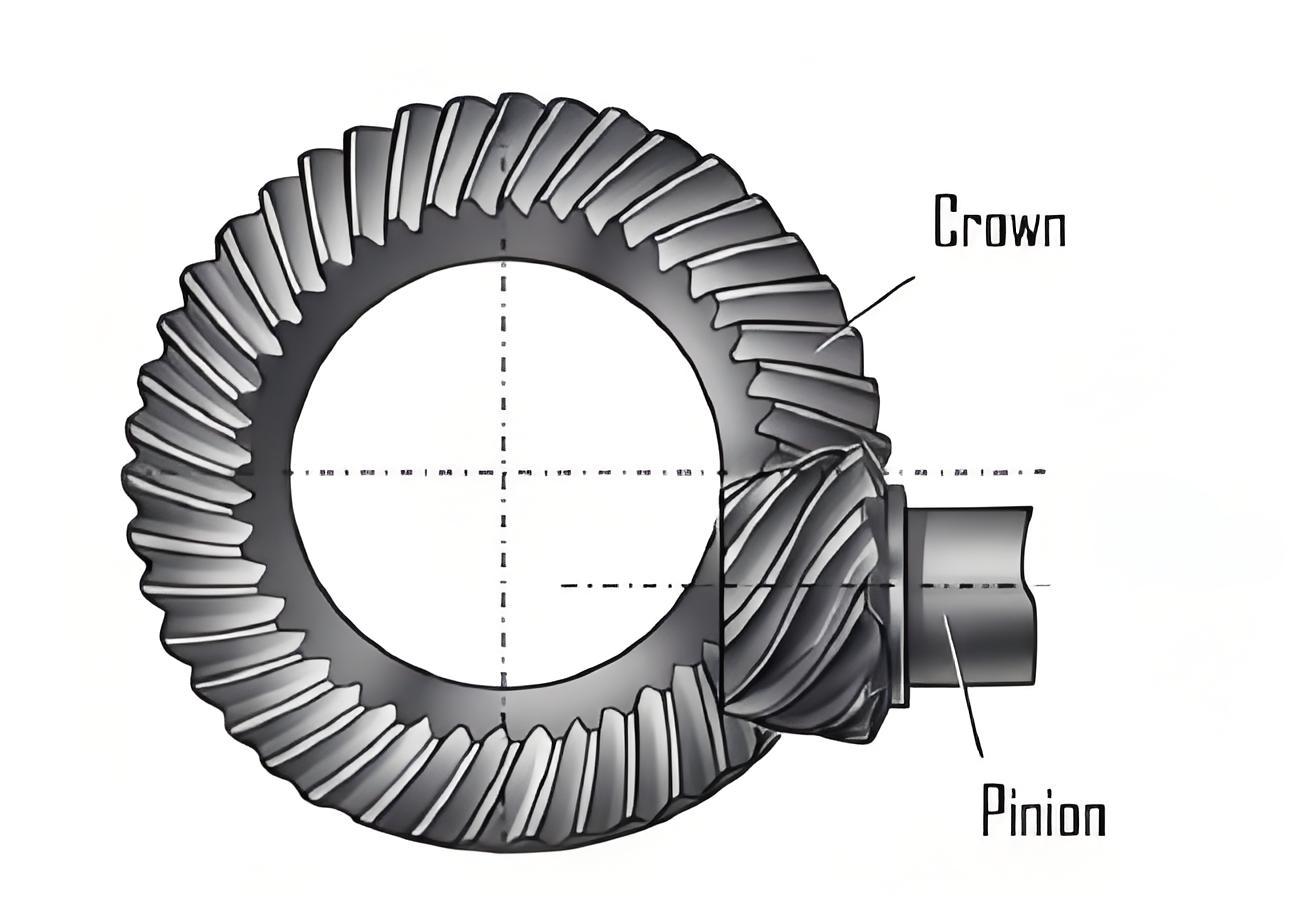This study investigates the meshing behavior of extended epicycloid hypoid gears through finite element analysis and experimental validation. Key parameters including contact patterns, bending stress, contact ratio, and transmission error are systematically analyzed to establish performance correlations under varying loads.
Finite Element Modeling
The hypoid gear pair was discretized using hexahedral elements with Jacobian coefficients exceeding 0.7 to ensure computational accuracy. The dynamic implicit solver in ABAQUS handled nonlinear contact behavior through surface-to-surface interaction pairs. Material properties were assigned as:
$$ E = 206\ \text{GPa}, \quad \nu = 0.3, \quad \rho = 7,850\ \text{kg/m}^3 $$
| Component | Element Type | Node Count | Contact Algorithm |
|---|---|---|---|
| Pinion | C3D8R | 218,743 | Surface-to-surface |
| Gear | C3D8R | 302,156 |

Contact Pattern Evolution
The elliptical contact area demonstrates dynamic characteristics during meshing:
$$ A_c(t) = \pi \cdot a(t) \cdot b(t) $$
| Meshing Phase | Contact Area (mm²) | Stress Distribution |
|---|---|---|
| Initial Engagement | 3.2 ± 0.5 | Convex-concave pairing |
| Full Engagement | 8.7 ± 1.2 | Distributed pressure |
| Disengagement | 2.1 ± 0.3 | Edge contact |
Root Bending Stress Analysis
The alternating stress behavior at tooth roots follows:
$$ \sigma_{\text{max}} = \frac{6F_t h}{bt^2} \left(1 + \frac{t}{2h}\right) $$
| Component | Peak Tensile Stress (MPa) | Compressive Phase |
|---|---|---|
| Pinion | 487 ± 23 | Disengagement |
| Gear | 423 ± 19 | Engagement |
Load-Dependent Contact Ratio
The contact ratio demonstrates nonlinear growth with increasing torque:
$$ \varepsilon(T) = 1 + 0.8\left(1 – e^{-0.003T}\right) $$
| Torque (Nm) | Contact Ratio | Active Pairs |
|---|---|---|
| 100 | 1.32 | 1-2 |
| 500 | 1.87 | 2-3 |
| 1000 | 2.41 | 2-3 |
Transmission Error Dynamics
The transmission error (TE) exhibits characteristic load sensitivity:
$$ \text{TE} = \phi_2 – \left(\frac{Z_1}{Z_2}\phi_1\right) $$
| Load Condition | TE Peak-Peak (arcmin) | Phase Shift |
|---|---|---|
| No-load | 4.2 ± 0.3 | 0° |
| Optimal Load | 1.1 ± 0.2 | 22.5° |
| Overload | 2.8 ± 0.4 | 45° |
Conclusion
The extended epicycloid hypoid gear demonstrates superior load-sharing capabilities with contact ratios exceeding 2.4 under full torque. Transmission error minimization occurs at intermediate loads (400-600 Nm), while root stress alternation reveals asymmetric loading patterns between pinion and gear components. These findings provide critical insights for optimizing hypoid gear designs in automotive driveline applications.
